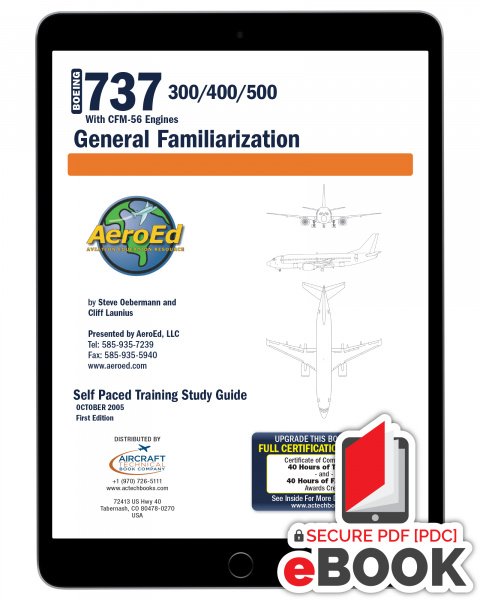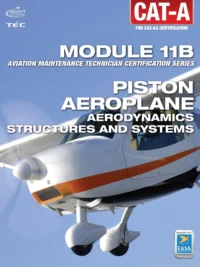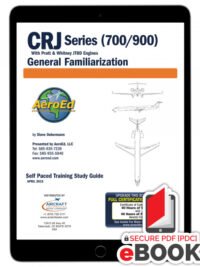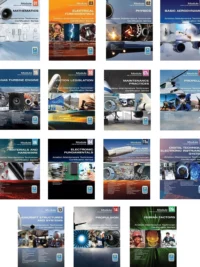Description
Introduction to the Boeing 737 (300-500) Series
The Boeing 737 (300-500) series represents a significant phase in the evolution of the 737 family, marking substantial enhancements over its predecessors. Introduced in the mid-1980s, the 737-300 was the first in this series, followed by the 737-400 and 737-500. These models have played a pivotal role in commercial aviation, renowned for their reliability, performance, and operational efficiency.
One of the most noteworthy advancements in the 737 (300-500) series is the introduction of the CFM-56 engines. These engines provided a considerable improvement in fuel efficiency, noise reduction, and overall performance compared to earlier JT8D engines used in the 737-200. The CFM-56 engines enhanced the series’ appeal to airlines by reducing operational costs and extending range capabilities.
The Boeing 737 (300-500) series also brought forward key technical specifications that set new benchmarks in commercial aviation. The 737-300 can seat between 128 and 149 passengers, while the 737-400 accommodates up to 168 passengers, making it an ideal choice for short to medium-haul routes. The 737-500, although slightly smaller, offers similar operational benefits with a seating capacity of 110 to 132 passengers. Each variant in this series embodies a blend of innovation and practicality, ensuring widespread adoption in airline fleets worldwide.
The significance of this series extends beyond technical specifications, as it has also cemented its place in aviation training and familiarization. General familiarization manuals and certification courses are integral for students, technicians, instructors, and maintenance personnel. These educational tools provide comprehensive knowledge about the aircraft’s systems, operation, and maintenance procedures. They serve as essential resources, equipping aviation professionals with the expertise required to ensure the efficient and safe operation of the Boeing 737 (300-500) series.
Overall, the Boeing 737 (300-500) series symbolizes a milestone in commercial aviation, balancing innovative engineering with practical enhancements, thus continuing the legacy of the iconic 737 family.
Content and Structure of General Familiarization Manuals
The General Familiarization Manuals for the Boeing 737 (300-500) series meticulously adhere to the ATA 100 format, ensuring standardized documentation. This uniform structure facilitates ease of use and enhances understanding for maintenance professionals. The manuals are also aligned with ATA 104 level requirements, providing varying depths of information tailored to different stages of training and levels of expertise.
One of the primary areas covered in these manuals is a comprehensive overview of the aircraft’s mechanical systems. This includes detailed explanations of the airframe, powerplant, and avionics. Each section is specifically designed to offer clear and precise descriptions, ensuring that users gain a thorough understanding of the aircraft’s fundamental constructs.
Additionally, the manuals delve into the description and operation of these systems. This section is particularly valuable for maintenance personnel as it outlines the functionality and integration of various components, from the basic operational principles to more intricate details. For example, the manuals provide insights into the operation of the hydraulic and electrical systems, highlighting how they interconnect and support the overall performance of the Boeing 737 (300-500) series.
Another critical component of the General Familiarization Manuals is the detailed information on controls and indications. This area addresses the cockpit layout, including the location and purpose of each control and indicator. Such information is imperative for ensuring safe and efficient aircraft operation. Additionally, clear diagrams and schematics support the text, enhancing comprehension and retention of the material.
Component locations and servicing procedures are also extensively documented. Each manual provides exhaustive details regarding the location of various aircraft components, facilitating ease of access for inspections and maintenance tasks. Servicing procedures are outlined step-by-step, ensuring that maintenance actions are performed correctly and safely, adhering to the highest standards.
These manuals are instrumental for preparatory training, serving as prerequisite material for more advanced systems-level classes. They offer a foundational understanding that is crucial for delving deeper into the operational and technical intricacies of the Boeing 737 (300-500) series. Whether used for reviewing concepts or as a training resource, the General Familiarization Manuals are indispensable tools in the educational journey of aviation professionals.
Benefits and Applications of the Self-Study Manuals
The general familiarization self-study manuals offer numerous advantages that make them a valuable resource in the field of aviation maintenance. Notably, these manuals provide an economical approach to education and training, benefiting a diverse range of users, including new hires, maintenance repair and overhaul (MRO) training departments, and airline maintenance staff. These resources are crafted to be comprehensive yet accessible, ensuring that individuals can acquire essential knowledge without the need of extensive, and often costly, formal training programs.
One significant benefit of these self-study manuals is their suitability for onboarding new technicians. By integrating these manuals into the initial training phase, organizations can ensure new hires quickly become acquainted with the critical aspects of the Boeing 737 (300-500) operations. This approach not only accelerates the learning process but also ensures a standardized understanding of fundamental concepts, which is crucial for maintaining the high safety standards required in aviation.
Moreover, these manuals serve as an ideal resource for refresher courses. Aviation maintenance is an ever-evolving field, with continuous updates and improvements to aircraft systems and procedures. By utilizing self-study manuals, experienced technicians can periodically refresh their knowledge to stay current with the latest industry standards and practices. This is particularly beneficial during routine safety reviews or before inspections by regulatory authorities, where up-to-date knowledge is paramount.
In addition to their role in onboarding and refresher courses, self-study manuals support ongoing professional development. Continuous learning is a cornerstone of career advancement in aviation maintenance. The manuals offer in-depth, targeted information that can help airline maintenance staff and MRO personnel enhance their skills and broaden their expertise. This facilitates personal growth and contributes to overall organizational efficiency, as well-trained staff can perform complex tasks with greater proficiency and accuracy.
Given their versatility and cost-effectiveness, general familiarization self-study manuals are indispensable tools in the aviation maintenance industry. They empower individuals and organizations alike to achieve and maintain high standards of knowledge and professionalism.
Certification Programs and Upgrading Pathways
The Boeing 737 (300-500) series aircraft require a thorough understanding and familiarity for those involved in their operation and maintenance. Certification programs play a vital role in ensuring that personnel are adequately trained to handle these aircraft efficiently and safely. These programs can be purchased separately from the self-study manuals, or individuals may choose to upgrade from the manual-only package to a comprehensive certification package. This flexibility allows participants to tailor their training according to their professional needs and career aspirations.
Certification programs encompass various structured segments, including theoretical courses, practical training, and rigorous assessment modules. Participants must meet specific criteria and successfully complete examinations to earn their certification. The certification not only validates the skillset of the personnel but also enhances their credibility and marketability in the aviation industry.
One of the significant benefits of enrolling in a certification program is the structured learning environment, which helps reinforce the knowledge gained from self-study manuals. These programs are designed to simulate real-world scenarios, providing participants with hands-on experience that is vital for mastering the complexities of the Boeing 737 (300-500) series. Furthermore, certified individuals are better equipped to troubleshoot and address technical issues, contributing to improved operational efficiency and safety standards.
It is essential to distinguish between the various training tags associated with Boeing 737 courses. General familiarization courses offer a broad overview and foundational understanding of the aircraft’s systems. In contrast, TRI (Type Rating Instructor) courses focus on the advanced methodologies and practices essential for instructing future pilots. Type training courses, on the other hand, are specific to the aircraft type, delving deeper into the technical and operational nuances.
In summary, whether opting for general familiarization, TRI, or type training courses, incorporating certification programs can significantly enhance an individual’s proficiency and career prospects. By bridging the gap between theoretical knowledge and practical application, these programs ensure a higher standard of excellence within the aviation sector.










Reviews
There are no reviews yet.